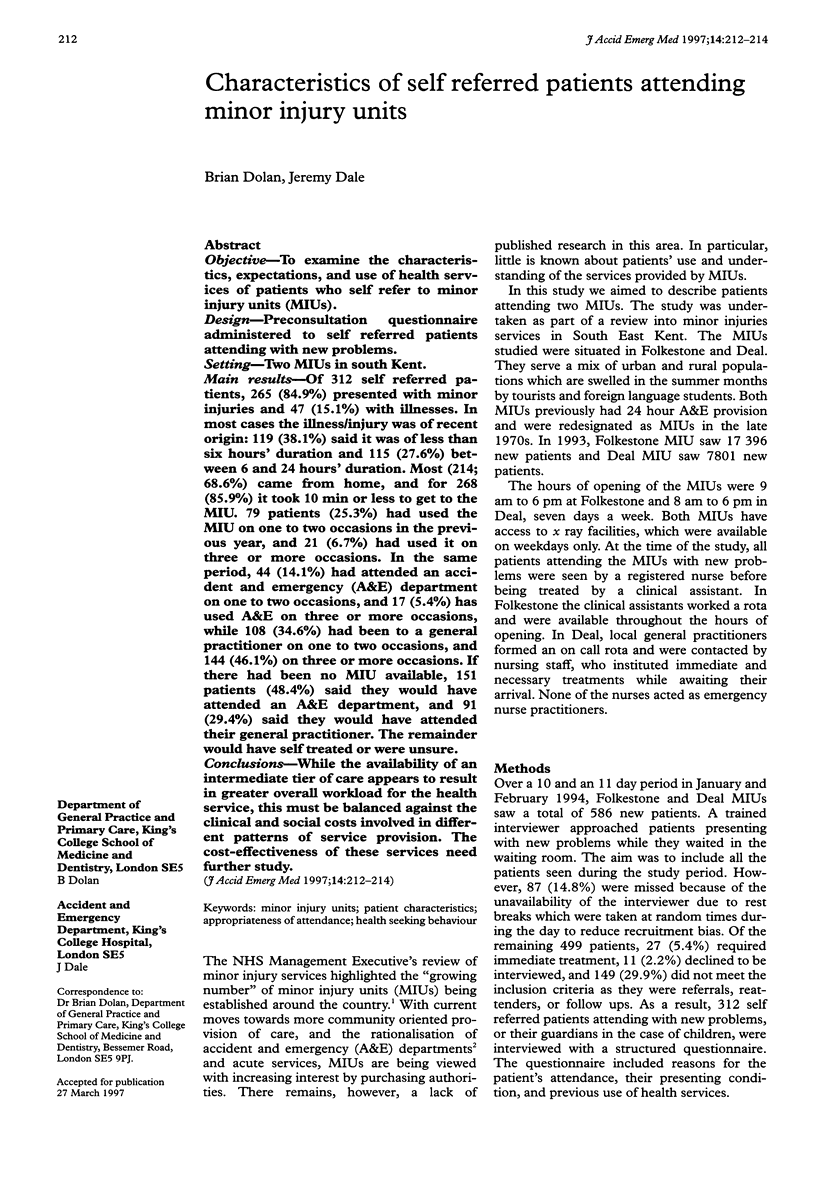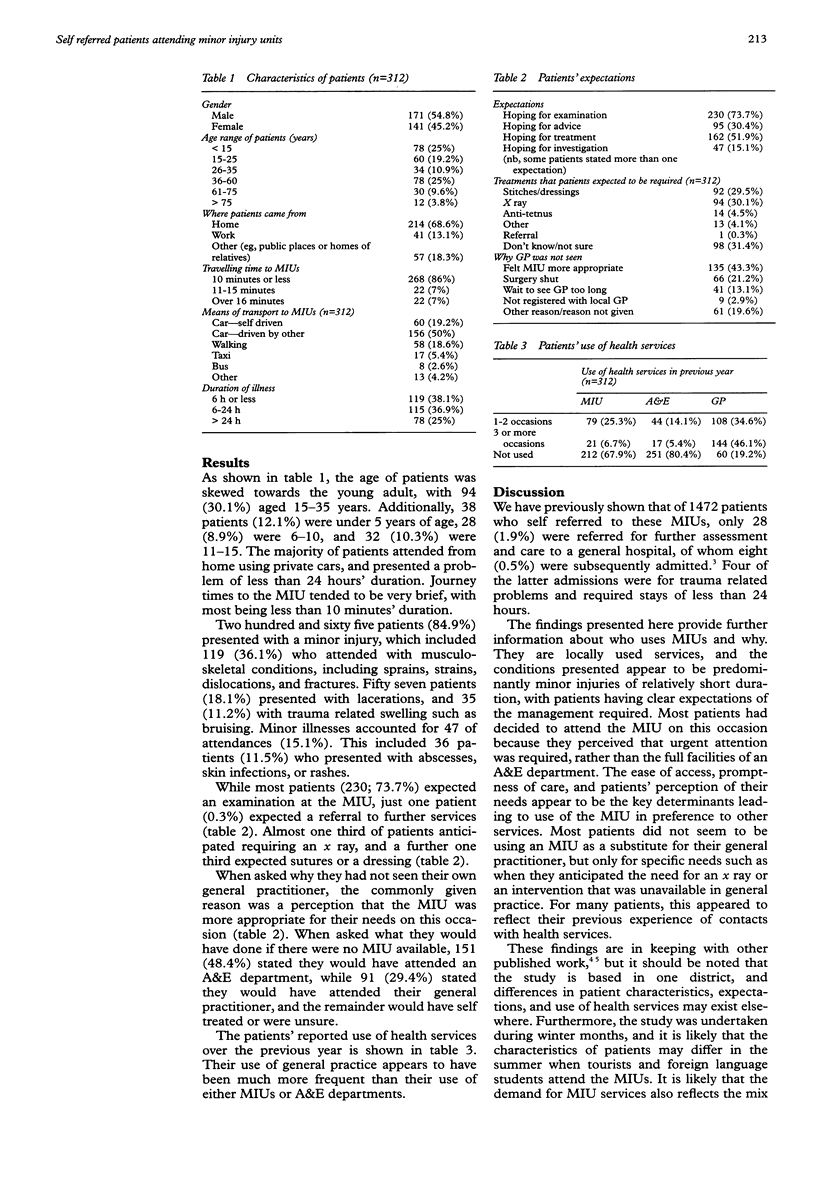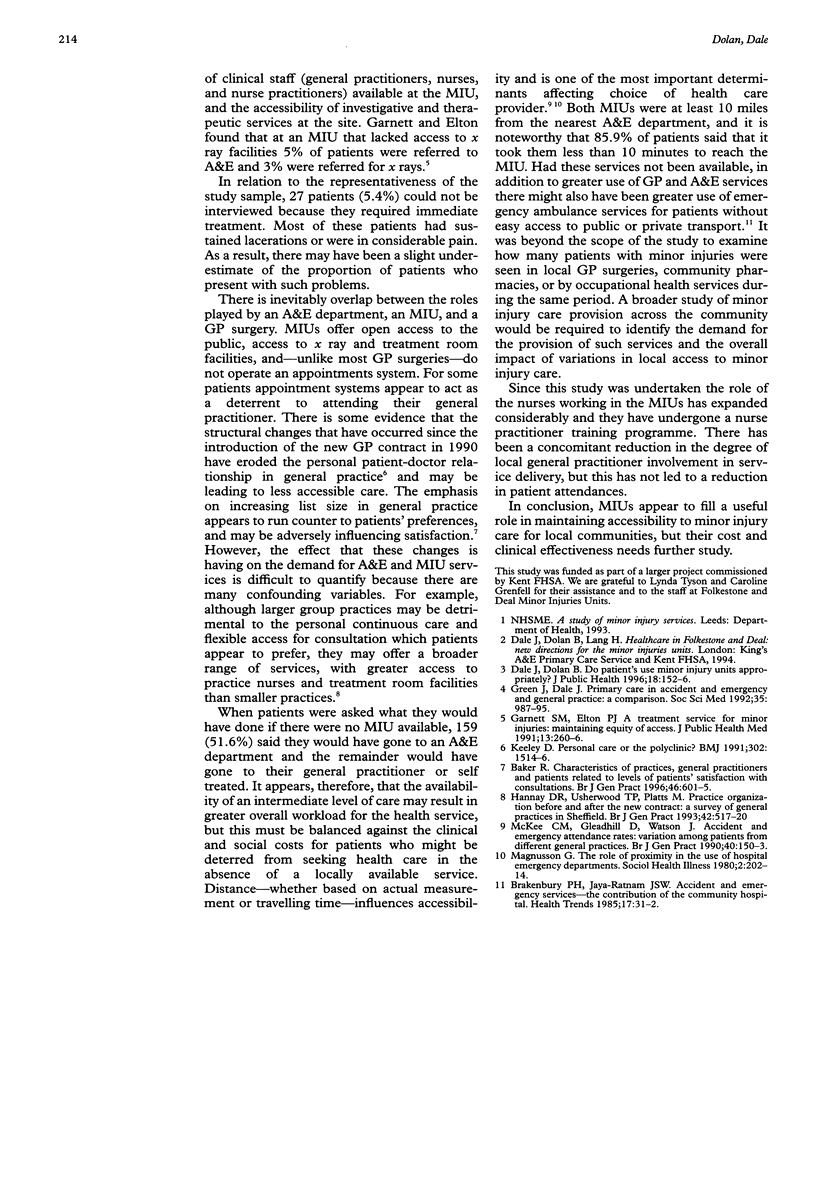Abstract
OBJECTIVE: To examine the characteristics, expectations, and use of health services of patients who self refer to minor injury units (MIUs). DESIGN: Preconsultation questionnaire administered to self referred patients attending with new problems. SETTING: Two MIUs in south Kent. MAIN RESULTS: Of 312 self referred patients, 265 (84.9%) presented with minor injuries and 47 (15.1%) with illnesses. In most cases the illness/injury was of recent origin: 119 (38.1%) said it was of less than six hours' duration and 115 (27.6%) between 6 and 24 hours' duration. Most (214; 68.6%) came from home, and for 268 (85.9%) it took 10 min or less to get to the MIU. 79 patients (25.3%) had used the MIU on on e to two occasions in the previous year, and 21 (6.7%) had used it on three or more occasions. In the same period, 44 (14.1%) had attended on accident and emergency (A&E) department on one to two occasions, and 17 (5.4%) has used A&E on three or more occasions, while 108 (34.6%) had been to a general practitioner on one to two occasions, and 144 (46.1%) on three or more occasions. If there had been no MIU available, 151 patients (48.4%) said they would have attended an A&E department, and 91 (29.4%) said they would have attended their general practitioner. The remainder would have self treated or were unsure. CONCLUSIONS: While the availability of an intermediate tier of care appears to result in greater overall workload for the health service, this must be balanced against the clinical and social costs involved in different patterns of service provision. The cost-effectiveness of these services need further study.
Full text
PDF


Selected References
These references are in PubMed. This may not be the complete list of references from this article.
- Baker R. Characteristics of practices, general practitioners and patients related to levels of patients' satisfaction with consultations. Br J Gen Pract. 1996 Oct;46(411):601–605. [PMC free article] [PubMed] [Google Scholar]
- Brakenbury P. H., Jaya-Ratnam J. S. Accident and emergency services--the contribution of the community hospital. Health Trends. 1985 May;17(2):31–32. [PubMed] [Google Scholar]
- Dale J., Dolan B. Do patients use minor injury units appropriately? J Public Health Med. 1996 Jun;18(2):152–156. doi: 10.1093/oxfordjournals.pubmed.a024474. [DOI] [PubMed] [Google Scholar]
- Green J., Dale J. Primary care in accident and emergency and general practice: a comparison. Soc Sci Med. 1992 Oct;35(8):987–995. doi: 10.1016/0277-9536(92)90238-l. [DOI] [PubMed] [Google Scholar]
- Hannay D. R., Usherwood T. P., Platts M. Practice organization before and after the new contract: a survey of general practices in Sheffield. Br J Gen Pract. 1992 Dec;42(365):517–520. [PMC free article] [PubMed] [Google Scholar]
- Keeley D. The future of general practice: Personal care or the polyclinic? BMJ. 1991 Jun 22;302(6791):1514–1516. doi: 10.1136/bmj.302.6791.1514. [DOI] [PMC free article] [PubMed] [Google Scholar]
- Magnusson G. The role of proximity in the use of hospital emergency departments. Sociol Health Illn. 1980 Jul;2(2):202–214. doi: 10.1111/1467-9566.ep10487794. [DOI] [PubMed] [Google Scholar]
- McKee C. M., Gleadhill D. N., Watson J. D. Accident and emergency attendance rates: variation among patients from different general practices. Br J Gen Pract. 1990 Apr;40(333):150–153. [PMC free article] [PubMed] [Google Scholar]


